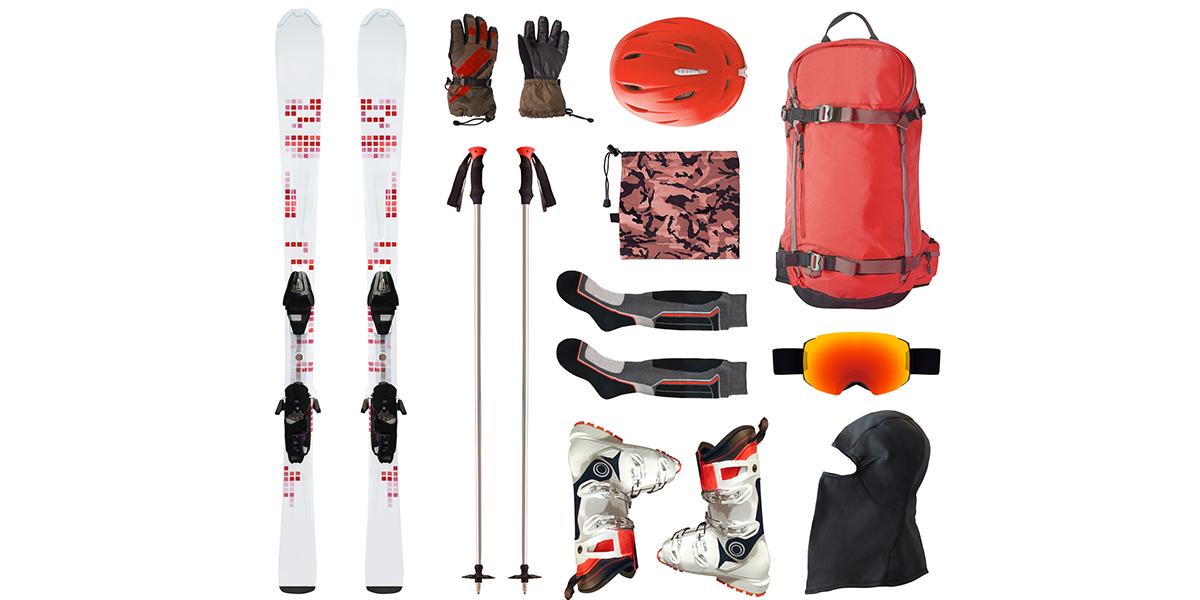What Ski Accessories You Need or Can Live Without
Getting Your Ski Accessories Organized
It's time to organize all your ski accessories and gear, as your ski vacation is approaching fast. Last year, you remember some things that you wanted to bring next year, but what was that? Getting your ski gear and all those ski accessories organized for your ski vacation is daunting. Here's the list of what you need and might not need. You can quickly put together a ski accessories order with the links below via our Amazon affiliate marketing program.The Balaclava, the Ski Hat, and the Neck Gator
Keep your head warm with a balaclava, a ski hat, and a neck gator, and, no, all three of these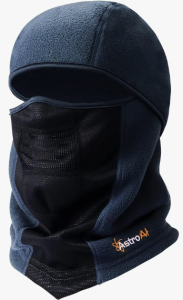 headgear pieces are not worn together. The best combination is to have one of each available in your ski accessories stash.
headgear pieces are not worn together. The best combination is to have one of each available in your ski accessories stash.
The Balaclava
The balaclava is a stand-alone and popular to wear when conditions are cold, blowing, and extreme. This single attire is a hat, neck gator, all-in-one, that you pull over your head. By design, it seals the wind and snow from finding a way into your head and neck areas, and it won’t get thrown off your head like a ski hat might. Balaclavas are worn under ski helmets as well. Traditionally, ski goggles are worn over the balaclava, and the hood of your ski jacket is pulled over everything and zipped up around your face. This setup makes you ready for anything. Even in the event of a faceplant in deep powder, the likelihood of snow getting in is minimal. This protection will give you a warm, dry, and guarded feeling in extreme conditions.Considerations of the Balaclavas
Balaclavas are designed with extra material that can be pulled over your face, neck, and chin or completely over your mouth and nose. Although the balaclava is warm and super protective, it can become uncomfortable due to moisture build-up from your breath moving through the fabric. Most are designed with breathable materials or even a slot in the mouth/nose area. However, even with these features, they get nasty with heavy use. They need to be washed after a big day or at least dried out for the days to come. It’s best to have a balaclava that you are comfortable wearing and ready when conditions warrant it, but it's not something you want to wear all the time.The Ski Hat and the Neck Gaiter
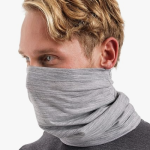 Second to the balaclava in warmth and protection is the ski hat neck gaiter combination. For some, that’s all that’s needed. The break between the two creates a possible gap for snow to find its way in. However, the hat-neck-gator combination is more flexible. If you get too hot, the gator can be removed, and the hat worn alone. The neck gator is a tube of fabric that can be pulled up over the mouth and nose or worn just around the neck. When conditions get extreme, the neck gator is pulled up high over the back of the hat, helping to create a seal. They tend to be less bulky and often just as warm.
Neck gaiters made of merino wool are the best as this material is soft next to your skin, wicks away moisture, and dries quickly.
Second to the balaclava in warmth and protection is the ski hat neck gaiter combination. For some, that’s all that’s needed. The break between the two creates a possible gap for snow to find its way in. However, the hat-neck-gator combination is more flexible. If you get too hot, the gator can be removed, and the hat worn alone. The neck gator is a tube of fabric that can be pulled up over the mouth and nose or worn just around the neck. When conditions get extreme, the neck gator is pulled up high over the back of the hat, helping to create a seal. They tend to be less bulky and often just as warm.
Neck gaiters made of merino wool are the best as this material is soft next to your skin, wicks away moisture, and dries quickly.
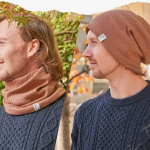 Variations of neck gaiters include lighter-weight fabrics, longer tubes, and various patterns. Neck gaiters can double as hats or be folded and worn as headbands. The longer variety can double as a slouchy hat.
Variations of neck gaiters include lighter-weight fabrics, longer tubes, and various patterns. Neck gaiters can double as hats or be folded and worn as headbands. The longer variety can double as a slouchy hat.
Ski Hats
Yes, you must have a ski hat or even several ski hats. Ski hats come in many, many styles and weights. For those who live in colder climates, as you know, ski hats have many uses. Not to mention, they are stylish to wear out and about.The Beanie ski hat 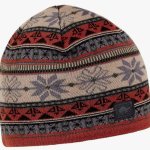
The beanie hat is the lightest weight hat and can fit like a skull cap. However, some fold up around the edge or have a small pom or tassel. Beanie hats are a must-have and best for cold to milder winter days. They work well for aerobic outdoor activities like cross-country skiing, running, or hiking. Skull cap varieties work well with layering and can be worn under ski helmets or hooded coats.
The Chullo Ski Hat
A step up from the beanie is the Chullo ski hat. These hats are usually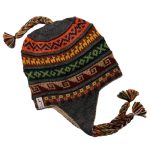 made of wool with a soft liner for comfort. The traditional design has ear flaps with long tassels that can be tied. They are very ornamental with various woven patterns with top and tie tassels, making them much more stylish than the beanie hat.
made of wool with a soft liner for comfort. The traditional design has ear flaps with long tassels that can be tied. They are very ornamental with various woven patterns with top and tie tassels, making them much more stylish than the beanie hat.
The Pom-Pom Ski Hat
Pom-pom ski hats are stylish but not necessarily the most functional. The pom-pom ski hat is traditional looking and fun to wear but a bit clumsy by design. The larger the pom-pom, the easier it is to fall off. These hats must be fitted around the base to help with this problem. They don’t layer very well, either. Keep the larger pom-pom hats for special occasions, but don’t rely on them for cold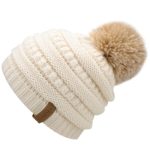 weather days.
weather days.
Ski Helmets
Ski helmets are popular but not required except in a few cases. Regions that require children to wear ski helmets are New Jersey, Italy, and parts of Austria. Vail Resorts has compulsory rules for minors to wear ski helmets. Vail Resorts includes nine popular resorts throughout the US. Wearing a ski helmet is a good idea; however, it forfeits traditional pom pom and Chullo-style ski hats. A skullcap-type beanie is what works for wearing under your helmet. Many helmets come with insulated helmet liners. These liners are designed to work with their respective helmet and offer excellent fit and warmth. Helmet liners can be removed and washed as needed.
Ski Goggles and Ski Sunglasses
Whether you’re a recreational or an avid skier, owning ski goggles and sunglasses is a must-have. Along with that comes the lens cloth, a very small but vital accessory that will make your day. Regardless of the weather conditions, having goggles and sunglasses with you is a good idea. For many reasons, foggy lenses, trapped moisture, or losing one will make having the other very useful. Lens cloths can become wet, dirty, forgotten, or lost. Of course, the best solution is not to fowl your eye protection, but that’s hard to count on.Ski Goggles
Ski goggles fall into the “you get what you pay for” category. With so many personal needs for eye protection and vision, we recommend you work with a ski goggles specialist to help you find the best selection.Ski Sunglasses
Ski Sunglasses, similar to ski goggles, come in even more variations. You might already have sunglasses that can cross over from another sport, like bike riding or jogging. You want sports sunglasses for skiing.Ski Gloves, Ski Mittens, Liners, and Handwarmers 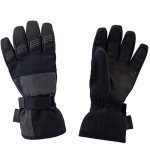
What should you wear, ski gloves or mittens? Having both in your ski accessories is best. Mittens are considered warmer than gloves, but you lose the dexterity of having fingers. Many skiers and riders wear mittens or gloves topped off with overmitts for cold or extreme weather days. Overmitts can be purchased with mittens, but you can swap them for whatever you like. Overmitts will sinch down around the wrist and then again at the bottom of the mit around the lower arm. This setup is super warm and creates a seal from the snow getting into your wrist area, which can be very uncomfortable once wet.
Mitten and Glove Liners
Glove liners are thin and lightweight Merino wool or synthetic fabric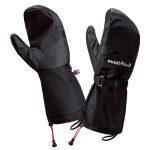 gloves worn under gloves or mittens. They can add substantial warmth to any glove or mitten and provide hand protection if the outer glove is removed momentarily or lost.
gloves worn under gloves or mittens. They can add substantial warmth to any glove or mitten and provide hand protection if the outer glove is removed momentarily or lost.
Hand Warmers
Hand warmers are small packets that are air-activated when taken from their packaging. They give off warmth felt next to the skin or when held in hand. The fairly small package size makes them easy to stash in a coat pocket but also easy to forget. Checking over any old hand warmer supplies for small punctures or tears in the packaging is a good idea. Hand warmers can be a relieving comfort for those freezing finger moments.Ski Socks 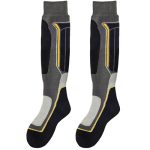
Foot comfort while alpine skiing or riding is a big deal. Your ability to connect with your skis or snowboard depends a lot on the comfort of your stance. Hot spots, bunching socks, and tight or loose-fitting boots are all problematic. A comfortable, good-fitting sock is mandatory.
Ski socks are knee-high socks with varying cushioning thicknesses and placement of breathable fabric weaves. The best ski socks are made of merino wool. The best ski sock compliments the fit and feel of your ski boot. Many stylish looks and designs of ski socks are available, so having several pairs is a good idea.
The Smaller Ski Accessories 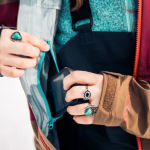
Where to stash all your stuff so you can easily get what you need when you need it; this is when all those pockets on your ski pants, ski jacket, ski sweater, or vest are vital. Part of choosing your ski suit is having places to stash your stuff conveniently. Internal jacket pockets are often preferred for wallets, credit cards, and small water bottles. While external, easy-access, phone-shaped pockets are best for phones or ski area maps. Roomy ski pant pockets work well for snacks, a ready-to-go neck gaiter, or spare glove liners.
Sunscreen
Never leave home without it, is the saying in Colorado. High-altitude ultraviolet rays are the most skin-damaging. Bring along a high-SPF-rated sunscreen and reapply throughout the day.Chapstick or Lip Balm
The wind and sun, while skiing, is hard on your lips. Bringing lip protection with a high SPF rating is a good idea.Wallet with Credit Cards
Having your wallet with credit cards and cell phone with you is a no-brainer. Finding a safe location within your ski suit is the challenge. Leaving everything in your ski jacket is fine until you take your jacket off and ski without it or leave it someplace. Using the pockets on your ski pants might be a better option.Skiing with a Backpack
Skiing at a ski area with a backpack is unnecessary. You're covered with access to ski lodges, high-speed chairlifts around every corner, and a radio-connected ski patrol. You might want to carry a small water bottle in addition to your goggles, sunscreen, chapstick, phone, snacks, and wallet. All these items can add up, and having everything in a ski backpack becomes appealing. However, the best-case scenario is to distribute these items throughout the pockets of your ski suit. Ski pants usually have an assortment of roomy pockets along with your ski jacket, ski vest, or ski sweater. Wearing a backpack while skiing is cumbersome. They are bulky and uncomfortable to wear and awkward on chairlifts. If you choose to go with a backpack, find a small, slim-fitting type that takes up minimal backspace with well-shaped shoulder and waist straps. You don’t want to notice that you’re wearing it.Ski Accessories for Skiing and Riding
Getting all your accessories and ski clothing together for your ski trip can be daunting. It’s super easy to forget something, and the smallest items, like goggles or your ski hat, impact your ability to have a good time. So do like Santa does and “make a list and check it twice” to ensure everything you need gets packed. Of course, whatever you might forget is a great reason to shop at the local ski shops. Area ski shops are fun places to check out all the latest and greatest gear. You never know what you might find!by Kathleen Fitzsimmons

